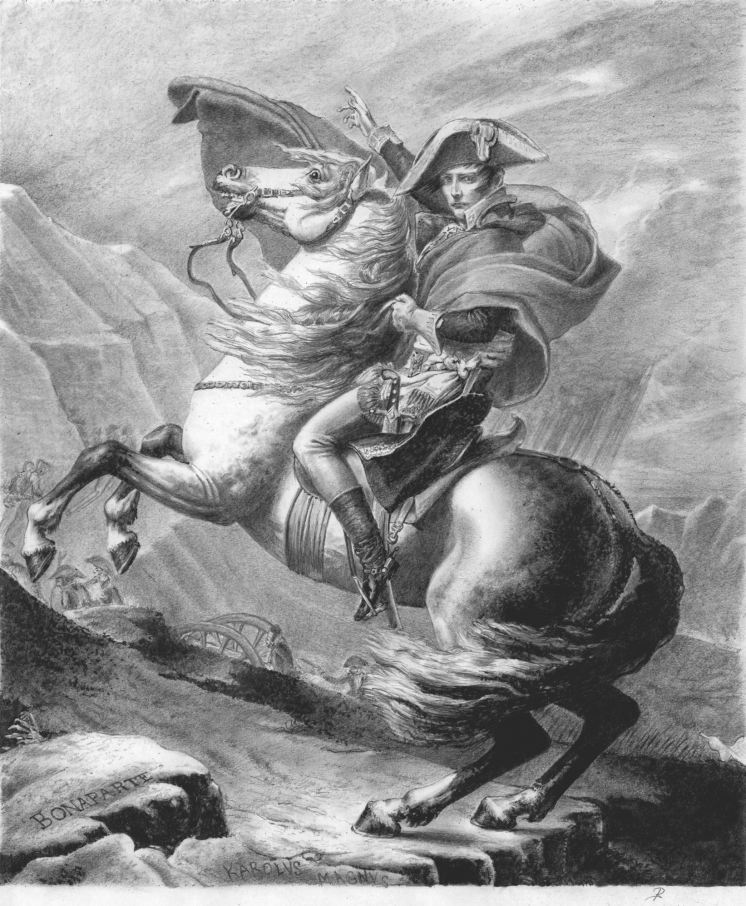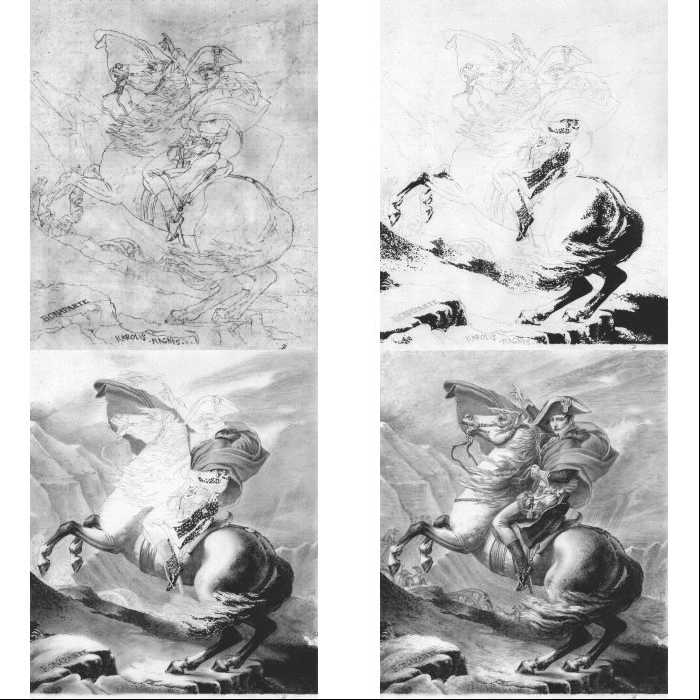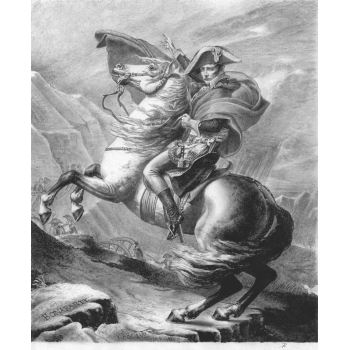Pencil drawing by PencilHB |
D E U T S C H | E N G L I S H |
Famous painting - David
|
Share this drawing |
|
|

November.08.2013 DIN-A3 16.5 x 11.7 inch
Description
Napoleon Crossing the Alps
Artist | Jacques-Louis David |
Title | Napoleon Crossing the Alps |
Date | 1800 |
Period | Classicism |
Technology | Oil on canvas |
Dimensions | 259-272 cm ◊ 221-237 cm (there are a lot of versions) |
Location | Ch‚teau de Malmaison
|
Why was this painting done?
Compared to other paintings, here is a special feature:
There are several versions, which differ only slightly (hence the many locations).
The subject is viewed as a propaganda motif. Napoleon wanted to be displayed as a large, resolute commander who leads his army across the Alps with ease.
In fact, the painting shows a war action, that truly was a success for France, but...
- ...Napoleon was not the only commander (there were five others!)
- ...Napoleon rode not on a warhorse in the Front of his troops Ė he rather travelled on a mule behind the soldiers
- ...the canon-guns were disassembled and were not pulled up on gun carriages to the mountain-tops (for a tube 100 men were needed)
It is believed that the painting-versions were created as a warning to the enemies of France, and were forwarded to the appropriate persons (kings). According to the motto: "Napoleon / France can overcome any barrier with ease and defeat you."
Today, of course, we regard this painting, as an art - but is it really?
The painting was a part of warfare.
How was this painting done?
David didnít invent this kind of subject, he rather developed his work on the base of artists who lived centuries before him.
David used the horse-statue of Russian tsar Peter the Great (made by Etienne-Maurice Falconets) as a template.
For the rider, David used a doll with clothes from Napoleon as a template.
I think, he painted the head directly from the 'original'.
The painting shows different qualities:
Rider and horse -> very good
Stone platform -> good
Background -> still ok
Soldiers -> only hinted
Classicism
I've read, it was classicism, that the first time the art was published to a wide audience.
Maybe the hobby, of creating drawings, goes back to the change in art through classicism.
top
Steps
top/left predrawing (pencil)
top/right blackshading (pencil)
bottom/left softshading rough (graphite-powder with fingers)
bottom/right softshading smooth (graphit-powder with folded paper)
bottom hardshading (pencil)

final drawing

Tools/Material
| Paper | normal printer-papier (DIN-A4...A6) normal sketchbook paper (DIN-A3) |
| Pencil HB | for pre drawing, fine lines, area-darkening and graphite-powder |
| Eraser | (2 x 2 x 0.6 cm) for area-lightening |
| Eraser | (small - at the end of a pencil) to smear graphite-powder |
| Sandpaper | to produce graphite-powder with the HB-pencil |
| Paper handkerchief | to smear graphite-powder or for blurring (wide areas) |
| Finger | to smear graphite-powder or for blurring (middle areas) |
| Pen with bicycle tube | to smear graphite-powder or for blurring (small areas) |
| Cardboard | to smear graphite-powder or for blurring (tiny areas) |
| Eraser-template | simple construction with a gap (1 x 30mm) |
| Eraser-template | simple construction with a gap (1 x 2mm) |
| Extra papers | to protect areas |
Version March.15.2015
Copyright (C) 2014 by SEA
Software-Entwicklung Aichinger